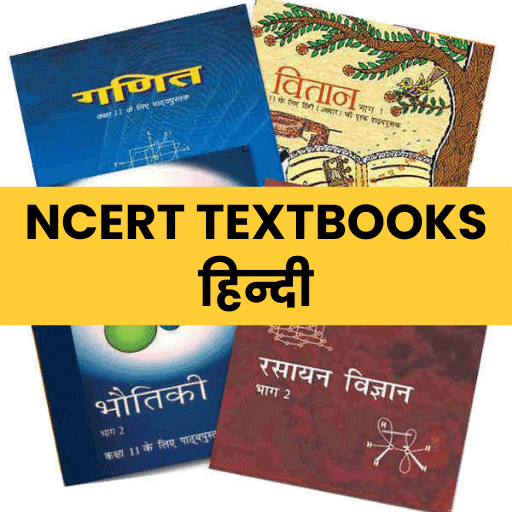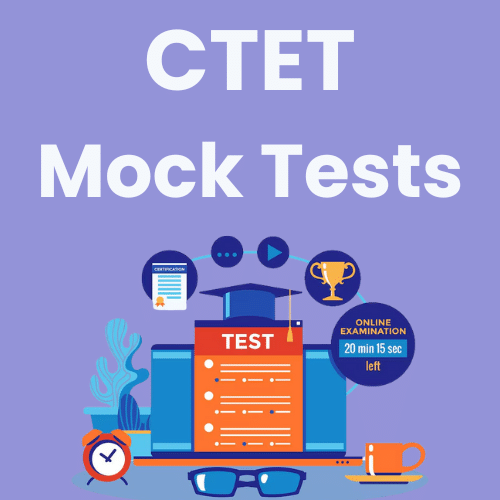Previous Year Questions (PYQs): Art and Culture | Additional Study Material for UPSC PDF Download
UPSC Prelims 2020: History
Q.1. With reference to the cultural history of India, consider the following pairs:
1. Parivrajaka – Renunciant and wanderer
2. Shramana – Priest with a high status
3. Upasaka – Lay follower of Buddhism
Select the correct answer using the code given below:
(a) 1and 2 only
(b) 1 and 3 only
(c) 2 and 3 only
(d) 1,2 and 3
Ans. (b)
UPSC Prelims 2019: History
Q.1. In which of the following relief sculpture inscriptions is ‘Ranyo Ashoka’ (King Ashoka) mentioned along with the stone portrait of Ashoka?
(a) Kanganahalli
(b) Sanchi I
(c) Shahbazgarhi
(d) Sohgaura
Ans. (a)
Solution: During the excavations (2000 to 2002) at Kanganahalli, the most important finding of the excavation include a stone sculptured slab bearing the name Raya Ashoka. This was the first inscribed portrait of Ashoka (surrounded by female attendants and queens) that was unearthed from the ruined Buddhist stupa.
UPSC Prelims 2018: History
Q.1. With reference to the cultural history of India, consider the following statements:
1. White marble was used in Mughal Buland Darwaza and Khankah at Fatehpur Sikri.
2. Red sandstone and marble were used in making Bara lmambara and Rumi Darwaza at Lucknow.
Which of the statements given above is/are correct?
(a) 1 only
(b) 2 only
(c) Both 1 and 2
(d) Neither 1 nor 2
Ans. (a)
Solution: S1: The Buland Darwaza is made of red and buff sandstone, decorated by white and black marble and is higher than the courtyard of the mosque. The Buland Darwaza is symmetrical and is topped by large free standing kiosks, which are the chhatris.
S2: The architectural style of the Rumi Darwaza is completely in sync with the Nawabi architecture of Lucknow, and its significantly different from the Mughals. The material used for the drawaza is bricks and its then coated with lime, while the Mughals often used red sand stone. This is why the detailing on the Darwaza is more intricate, which would be impossible to achieve in stone.
Q.2. Consider the following pairs: 
Select the correct answer using the codes below.
(a) 1 only
(b) 1 and 2
(c) 3 only
(d) 2 and 3
Ans. (a)
Solution: 
Q.3. Consider the following pairs :
(a) 1 only
(b) 1 and 2
(c) 3 only
(d) 2 and 3
Ans. (b)
Solution: 
Q.4. The well-known painting “BaniThani” belongs to the
(a) Bundi school
(b) Jaipur school
(c) Kangra school
(d) Kishangarh school
Ans. (d)
Solution: Bani Thani is an Indian miniature painting painted by Nihâl Chand from the Marwar school of Kishangarh. It portrays a woman who is elegant and graceful. The painting’s subject, BaniThani, was a singer and poet in Kishangarh in the time of kingSawant Singh (1748–1764). She has been compared to the Mona Lisa. Inspired by Radha, BaniThani is characterized by idealized distinct features such as arched eyebrows, lotus-like elongated eyes and pointed chin. This painting was featured in an Indian stamp issued in 1973.
Q.5. With reference to cultural history of India, consider the following statements :
1. Most of the Tyagaraja Kritis are devotional songs in praise of Lord Krishna.
2. Tyagaraja created several new ragas.
3. Annamacharya and Tyagaraja are contemporaries.
4. Annamacharyaldrtanas are devotional songs in praise of Lord Venkateshwara. Which of the statements given above are correct?
(a) 1 and 3 only
(b) 2 and 4 only
(c) 1, 2 and 3
(d) 2, 3 and 4
Ans. (b)
Solution: Statement 1: TaḷḷapākaAnnamācārya (or Annamayya) was a 15th-century Hindu saint and is the earliest known Indian musician to compose songs called sankirtanas in praise of the god Venkateswara, a form of Vishnu. Hence S1 is incorrect.
Statement 2: Tyagaraja took music training from SontiVenkataramayya. But that didn’t stop him from taking musical inspirations from various earlier poets. He was an ardent devotee of lord Rama. In his praise and honour he wrote numerous musical operas, and about twenty four thousand songs, a claim that has been speculated among music historians. Hence, S2 is correct.
Statement 3: Tyagaraja was born on 14th May 1767 in the village of Thiruvayaru in the Thanjavur district of Tamil Nadu whereas TaḷḷapākaAnnamācārya (or Annamayya) (22 May 1408 – 4 April 1503) was a 15th-century Hindu saint. Hence, statement 3 is incorrect.
Statement 4: TaḷḷapākaAnnamācārya (or Annamayya) (22 May 1408 – 4 April 1503) was a 15th-century Hindu saint and is the earliest known Indian musician to compose songs called sankirtanas in praise of the god Venkateswara, a form of Vishnu. Hence, S4 is correct.
UPSC Prelims 2017: History
Q.1. With reference to Manipuri Sankirtana, consider the following statements:
1. It is a song and dance performance.
2. Cymbals are the only musical instruments used in the performance.
3. It is performed to narrate the life and deeds of Lord Krishna.
Which of the statements given above is/are correct?
(a) 1, 2 and 3.
(b) 1 and 3 only
(c) 2 and 3 only
(d) 1 only
Ans. (b)
Why: Sankirtana is one of the few important Indian heritages inscribed on the UNESCO Representative List of the Intangible Cultural Heritage of Humanity.
Solution: Statement 1 and 3: Sankirtana performers narrate the lives and deeds of Krishna through ritual singing, drumming and dancing of Manipur. So, both 1 and 3 are correct. Statement 2: Since drums are also used, statement 2 is incorrect.
Q.2. The painting of Bodhisattva Padmapani is one of the most famous and oft-illustrated paintings at
(a) Ajanta
(b) Badami
(c) Bagh
(d) Ellora
Ans. (a)
Q.3. Consider the following pairs:
Which of the pairs given above is/are correctly matched ?
(a) 1 only
(b) 2 and 3 only
(c) 1 and 3 only
(d) None of the above
Ans. (a)
Solution: Statement 2: Nanda Devi Raj Jaat Yatra is a festival of Gharwali and kumauoni people in Uttarakhand.
Statement 3: Wari Warkari or Varkari (Pandharpur Wari) is a Maharashtrian festival celebrated by Marathas.
Q.4. Which of the following is/are famous for Sun temples?
1. Arasavalli
2. Amarakantak
3. Omkareshwar
Select the correct answer using the code given below :
(a) 1 only
(b) 2 and 3 only
(c) 1 and 3 only
(d) 1, 2 and 3
Ans. (a)
Solution: Statement 1: Arasavalli Sun Temple is a 7th-century AD Sun Temple at Arasavalli in Andhra Pradesh.
Statement 3: Omkareshwar is a temple dedicated to God Shiva.
UPSC Prelims 2016: History
Q.1. What is/are common to the two historical places known as Ajanta and Mahabalipuram?
1. Both were built in the same period.
2. Both belong to the same religious denomination.
3. Both have rock-cut monuments.
Select the correct answer using the code given below.
(a) 1 and 2 only
(b) 3 only
(c) 1 and 3 only
(d) None of the statements given above is correct
Ans. (b)
Solution: Statement 1: according to the ASI, “While there is some evidence of architectural activity going back to the period of Mahendravarman-I (AD 600-30), the father of Mamalla, most of the monuments are attributed to the period of Narasimhavarman-I Mamalla (AD 630-68) – the Pallava ruler.
Statement 1: On the other hand Ajanta caves were excavated in different periods (circa. 2nd century B.C. to 6th century A.D.) according to the necessity. So, clearly 1 is wrong.
Statement 2: Mahabalipuram contains rock-cut rathas, sculptured scenes on open rocks like Arjuna’s penance, the caves of Govardhanadhari and Mahishasuramardini, the Jala-Sayana Perumal temple (the sleeping Mahavishnu or Chakrin at the rear part of the Shore temple complex). So, it is more linked to the Vaishnavites. On the other hand, Ajanta is linked more to the Buddhist religious denomination. Statement 2 is also wrong.
Statement 3: Both have rock-cut monuments, because cave cut Chaityas, Viharas and Stupas can be clearly seen at Ajanta. Also, the mural paintings that are made at Ajanta involve some rock-cutting as per ASI. Mahabalipuram is famous for rock monuments as described above. Only 3 is correct.
UPSC Prelims 2015: History
Q.1. With reference to art and archaeological history of India, which one among the following was made earliest?
(a) Lingaraja Temple at Bhubaneswar
(b) Rock-cut Elephant at Dhauli
(c) Rock-cut Monuments at Mahabalipuram
(d) Varaha Image at Udayagiri
Ans. (b)
Solution: Lingaraja Temple at Bhubaneswar was created in 11th AD. Rock-cut Monuments at Mahabalipuram are 7th century AD creation. At Udayagiri, it is 5th century AD creation. Rock-cut Elephant at Dhauli was created during Ashoka’s reign (272-231 BC). This is the oldest among the four.
Q.2. Kalamkari painting refers to
(a) a hand-painted cotton textile in South India
(b) a handmade drawing on bamboo handicrafts in North-East India
(c) a block-painted woollen cloth in Western Himalayan region of India
(d) a hand-painted decorative silk cloth in North-Western India
Ans. (a)
Solution: Kalamkari painting is a type of Indian folk textile art that involves free hand drawing and painting or printing on cloth, mostly cotton. Derived from the Persian language meaning ‘drawing or crafting with pen’, Kalamkari is an ancient form of painting that developed in India over a period of 3,000 years. Kalahasti and Machilipatnam in Andhra Pradesh, the nerve centres of this art continue to be beehives of Kalamkari activity.
|
20 videos|561 docs|160 tests
|
FAQs on Previous Year Questions (PYQs): Art and Culture - Additional Study Material for UPSC
| 1. What is the significance of art and culture in the UPSC exam? |  |
| 2. How can I prepare for art and culture for the UPSC exam? |  |
| 3. What are some important topics to cover in art and culture for the UPSC exam? |  |
| 4. Are there any specific art and culture-related current affairs that I should focus on for the UPSC exam? |  |
| 5. Can you suggest some online resources for studying art and culture for the UPSC exam? |  |



























